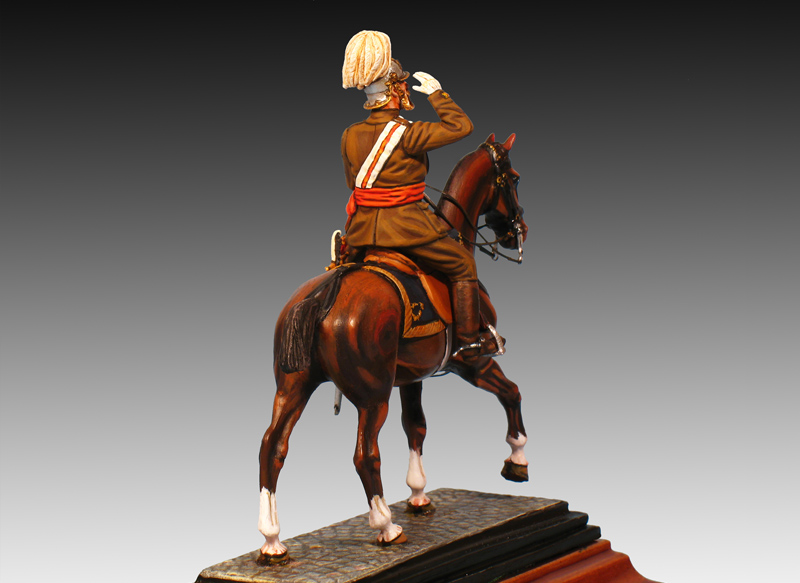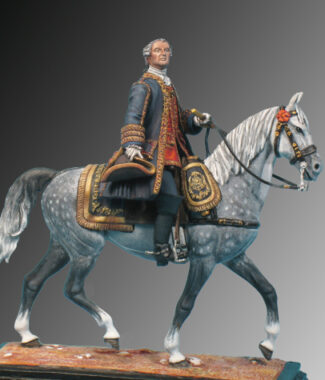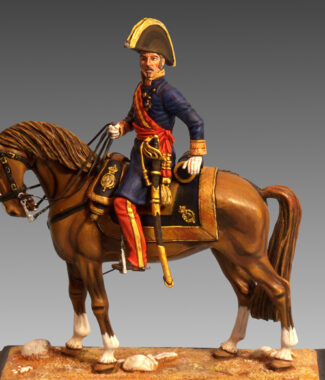He also took part in the conquest of Ait-Aixa, which earned him the promotion to commander on July 1, 1909 and he was awarded with the Cross of Military Merit. In 1910 he proposed the creation of a Corps of Volunteers of Rif (Moroccan troops within the Spanish Army). This was the origin of what later became the Native Regular Forces, which he created as High Comissioner of Morocco and following the French model, under the command of general Berenguer. These first units of Regulares successfully participated in the defence of Melilla and Larache.
His brilliant performance granted him access to politics. As a liberal and a republican, he opposed with determination the policy that General Primo de Rivera had been practising during his dictatorial rule. In this way, he opposed the formation of the so-called Juntas de Defensa, which meant that in 1926 he was deposed as military governor of Menorca, and he joined the reserve.
From then on, Miguel Cabanellas devoted himself actively to encouraging any plot against the authoritarian and arbitrary government of Primo de Rivera. Thus, he joined the plot organized in 1929 by Sánchez Guerra, which led to the definitive fall of the military regime, and to the overthrow of the king Alfonso XIII. Under the Second Republic, he was entrusted with important positions, given his service record and his political republican affiliation: he was appointed captain general of the Second Military Region (Andalusia) in 1931; later, commander-in-chief of the Moroccan army; and, finally, general director of the Civil Guard (1932).
He was a member of parliament for the Radical Republican Party during rule of a right-wing government during the second republican biennium. His entrenched republicanism and his well-known affiliation to Freemasonry made the government of the Popular Front, headed by Manuel Azaña, appoint him as Chief of the 5th Organic Division of Zaragoza (the Republic had previously suppressed the general captaincies). However, and contrary to what was expected by all, Miguel Cabanellas opted to support and join the military pronouncement of July 19, 1936. Cabanellas even ignored the advice of general Miguel Núñez de Prado, who travelled from Madrid only to try to persuade him that that was a wrong decision.
In order to remove him from the command of troops, and also because he was the oldest general within the rebels, he was appointed president of the National Defence Board, which was established in Burgos on July 24, 1936. General Mola, as the head of the rebel armies in the North, got rid of Miguel Cabanellas by putting him in a merely honorary position, which prevented him from having any part at all in the development of the military operations. By doing so, Mola also had direct control over Cabanellas just in case he decided to revert to his old republican ideas. However, Miguel Cabanellas resisted accepting his fate. As president of the National Defense Board he opposed the rise of General Francisco Franco to the leadership of the state newly created under rebel forces. Cabanellas had had Franco under his command in the African campaigns, and he considered him as a soldier but not as a politician, especially because according to him, once Franco accessed the supreme command of the rebel forces, he would exercise a strict and dictatorial control, as he actually did.
Franco created the State Technical Board on the same day he agreed to the total command of the rebel forces. His first measure then was to remove Cabanellas from any position of responsibility, in retaliation for Cabanellas’s past as a freemason and a republican, and especially for having opposed his rise to absolute power.
Cabanellas was appointed inspector general of the Army, a position that basically meant his political and military ostracism. Always displaying an exquisite military professionalism, he devoted himself to his new task with zeal and discipline. Death overcame him in Malaga on May 15, 1938, when he was carrying out one of his many visits to the rebel quarters. As soon as Cabanellas died, General Franco hurriedly seized all his papers and documents.
The figure wears the dress uniform of the generals in the transition period between the Monarchy and the Republic. It corresponds to the 1926 regulation (takeover of the General Captaincy of the 2nd Military Region in 1931): khaki uniform, metal helmet with feathers, general sash with corresponding tassels, decorations and band of the Great Military Cross with white badge. He also wears white gloves, gala saber and the general baton.








Reviews
There are no reviews yet.